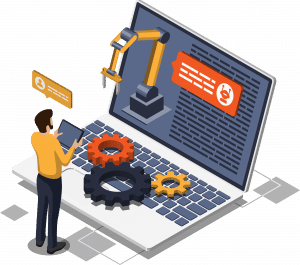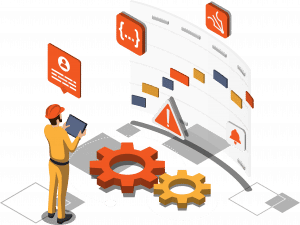HUMANISING AUTOMATION: AN INCLUSIVE APPROACH TO TECHNOLOGY
Automation in manufacturing is not about replacing human workforces, but about augmenting people’s capabilities, improving cycle times, and more.
The fourth industrial revolution is now well underway. We live in an era defined by automation, computational intelligence, and big data. Sensors and apps have come to play a central role not just in manufacturing, but in every industry, and even in our personal lives.
The rapid evolution of technology, particularly in the context of manufacturing, has led a lot of people to question their own futures in the sector. Many workers fear their professional lives are under threat in the age of lights-out manufacturing and automated production lines.
The reality is much more nuanced. Automation does not create nor replace jobs – it transforms them. Automation in manufacturing is not necessarily a binary process, but a way to augment human capabilities to better meet the challenges of scale and agility in today’s market.
There are many ways to implement automation on the shop floor, and most of them centre around improving the worker experience rather than removing it.
Here are a few examples:
Reducing manufacturing cycle times
Any efficient production line depends heavily on repeatable processes, such as moving parts from one part of the line to the next. Carrying out these tasks manually might be sufficient for smaller production lines, but it soon becomes impractical at scale. Without the help of industrial robots and real-time, data-driven insights, it is never long before manual workers end up being overburdened. When that happens, production cycles get longer, manufacturers fail to meet growing demands, and people end up being overworked.

Improving production quality and accuracy
Machines do not make mistakes, but they are only as effective as the people who use them. It still falls to people to ultimately decide what works best and what does not. However, armed with data-driven insights directly from the shop floor gives workers the visibility into production lines they need to make informed decisions. Automation makes it possible to create products to the exact same specifications, with much lower fault tolerances. At the same time, real-time data gives workers the insights they need to iteratively improve their production processes.

Enhancing production line reliability
Perhaps the greatest human benefit of automation is the greater reliability of production lines. After all, machines breaking down, leading to disruptions across the shop floor, is a situation that no one wants. Automated systems, such as environmental sensors and actuators, eases the burden on maintenance teams by enabling predictive maintenance. This allows teams to quickly identify processes or equipment that is at risk of failure before it actually fails and leads to serious problems on the shop floor.
Eliminating repetitive and boring tasks
It is, of course, true that automation can and does replace certain tasks on the shop floor. For workers, that is not necessarily a bad thing either. A lot of manufacturing tasks are inherently repetitive and boring, and few would claim to enjoy carrying them out manually. Moreover, if a task is too burdensome, it increases the risk of burnout and accidents. By eliminating such tasks, workers can take on more creative, decision-based roles, such as optimising production lines or ensuring quality control.

Automation is undeniably the future of manufacturing, but its role is still widely misunderstood. Rather than replacing workers, automation offers numerous opportunities to enhance human aspects of manufacturing, thus increasing job satisfaction and making it possible to meet the challenges of scale in a constantly evolving market.